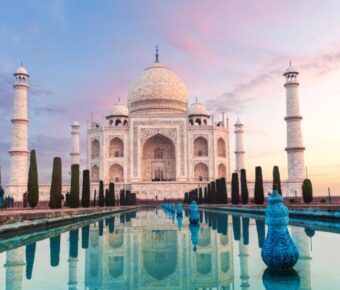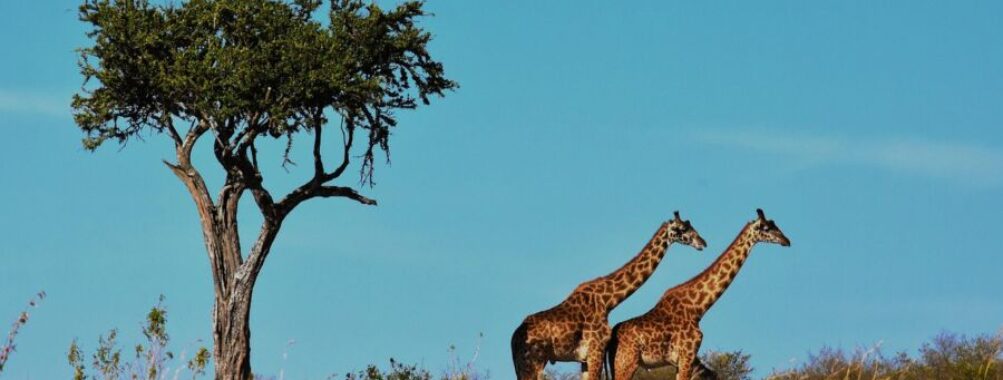
Tanzania Trip Cost: Affordable Safari Dreams for 2025
Planning a trip to Tanzania? You’re in for an adventure of a lifetime! From the stunning beaches of Zanzibar to the iconic wildlife of the Serengeti, Tanzania offers unforgettable experiences. But how much will it cost? A 7-day trip to Tanzania for two people, including a safari, typically costs around $7,400. This breaks down to about $530 per person per day.
Your Tanzania trip cost can vary widely depending on your travel style. Budget travelers can get by on $50-100 per day, while luxury safaris can easily run $1,000+ daily. Accommodation is a big factor, ranging from $10 for a hostel dorm to $200+ for upscale hotels. Food and local transport are relatively cheap, but safaris and flights will be your biggest expenses.
Don’t let the costs deter you – Tanzania is worth every penny! With some smart planning, you can create an amazing trip that fits your budget. We’ll help you break down the costs and share money-saving tips to make your Tanzanian dream a reality.
Contents
- Key Takeaways
- Planning Your Budget for Tanzania
- Understanding the Tanzanian Shilling
- Daily Costs Breakdown
- Accommodation Options
- Food and Dining Estimates
- Transportation and Travel Methods
- Safari Costs and Options
- Choosing Your Accommodations Wisely
- Hostels and Budget Hotels
- Mid-Range Accommodations
- Luxury Safari Lodges
- Food and Drink Considerations
- Local Cuisine and Street Food
- Restaurant Dining and Prices
- Self-Catering and Groceries
- Travel and Transportation
- Public Transport vs. Car Rentals
- Navigating Local Buses and Ferries
- Domestic Flights and Regional Travel
- Safari Planning: Types and Costs
- Budget Camping Safaris
- Mid-Range Safari Tours
- Luxury Safari Experiences
- Group Size and Pricing
- Destination Insights and Hidden Gems
- National Parks Beyond the Serengeti
- Coastal Escapes and Zanzibar Beaches
- Cultural Experiences and Village Tours
- Off-the-Beaten-Path Adventures
- Maximizing Your Travel Experience
- Timing Your Visit: Weather and Seasons
- Festivals and Events Worth Attending
- Nightlife and Social Scene
- Sustainable and Responsible Tourism
- Practical Tips for the Budget-Conscious Traveler
- Money-Saving Strategies
- Travel Insurance and Health Precautions
- Connectivity: SIM Cards and Internet Access
- Safety and Etiquette
- More Travel Guides
Key Takeaways
- Tanzania trip costs vary widely, from $50 to $1000+ per day
- Safaris and flights are the biggest expenses to budget for
- Smart planning can help you experience Tanzania’s highlights on any budget
Planning Your Budget for Tanzania

Budgeting for a Tanzania trip can seem tricky, but with the right info, you’ll be all set for an amazing adventure without breaking the bank. Let’s break down the costs you’ll face and how to plan smartly.
Understanding the Tanzanian Shilling
The local currency in Tanzania is the Tanzanian Shilling (TZS). As of 2024, 1 USD equals about 2,500 TZS. It’s smart to carry some cash, but don’t go overboard. Many places take cards now.
You’ll find ATMs at banks and shopping centers. Withdrawal fees can add up, so take out larger amounts less often.
Exchange rates at banks are usually better than at hotels or airports. Avoid changing money on the street – it’s risky and often a scam.
Daily Costs Breakdown
Your daily spend in Tanzania can vary a lot. Budget travelers might get by on $50-$70 a day. Mid-range? Think $100-$150. Luxury? $200+.
Here’s a rough daily budget breakdown:
- Budget: $15-$25 for food, $20-$30 for a hostel, $10-$15 for transport
- Mid-range: $30-$40 for food, $50-$80 for a hotel, $20-$30 for transport
- Luxury: $60+ for food, $150+ for a hotel, $50+ for transport
Remember, safaris and Zanzibar trips will bump up your costs. Plan for these big-ticket items separately.
Accommodation Options
Tanzania has digs for every wallet. In cities, you’ll find everything from basic guesthouses to swanky hotels.
Budget spots like hostels or local guesthouses can be as cheap as $10-$20 a night. They’re basic but clean and safe. Mid-range hotels run $50-$100. Expect air con, Wi-Fi, and maybe a pool.
Fancy lodges, especially on safaris, can hit $300+ per night. But wow, the views and service are worth it if you can swing it.
Booking ahead online often gets you better deals. In low season (April-May), prices can drop by 30% or more.
Food and Dining Estimates
Tanzanian grub is tasty and cheap if you eat local. Street food and local joints can fill you up for $3-$5 a meal. Try mishkaki (meat skewers) or chips mayai (chip omelet).
Mid-range restaurants charge $10-$20 per person. You’ll get a mix of local and international dishes. Fancy spots in cities or lodges? Budget $30+ per meal.
Supermarkets are great for snacks and picnic supplies. A big bottle of water is about $0.50. Local beer runs $1-$2 in shops, $3-$5 in bars.
Tip: “Mama Lishe” food stands serve cheap, yummy local food. They’re great for tight budgets.
Transportation and Travel Methods
Getting around Tanzania can be an adventure in itself. Buses are the cheapest option for long distances. Expect to pay $1-$2 per hour of travel on local buses.
For shorter trips, dala dalas (minibuses) are dirt cheap but often crowded. In cities, boda bodas (motorcycle taxis) are quick and cheap, about $1-$3 per ride.
Domestic flights save time but cost more. A flight from Dar es Salaam to Zanzibar is about $60-$100 one-way.
Renting a car gives you freedom but comes with risks. It costs about $50-$80 per day, plus fuel. Only do this if you’re comfy with rough roads and different driving rules.
Safari Costs and Options
Safaris are the big-ticket item in Tanzania. A basic 3-day safari in parks like Serengeti or Ngorongoro can start at $150-$200 per day per person. This usually includes transport, guide, food, and basic lodging.
Mid-range safaris run $250-$350 per day. You’ll get better vehicles, nicer lodges, and smaller groups. Luxury safaris? Sky’s the limit, but expect $500+ per day.
Joining a group tour is usually cheaper than a private safari. Consider visiting in low season for better deals. Some parks, like Tarangire, are cheaper than the famous ones but still amazing.
Budget tip: Look into camping safaris. They’re cheaper and super fun. You’ll still see all the animals, just with more basic digs at night.
Choosing Your Accommodations Wisely
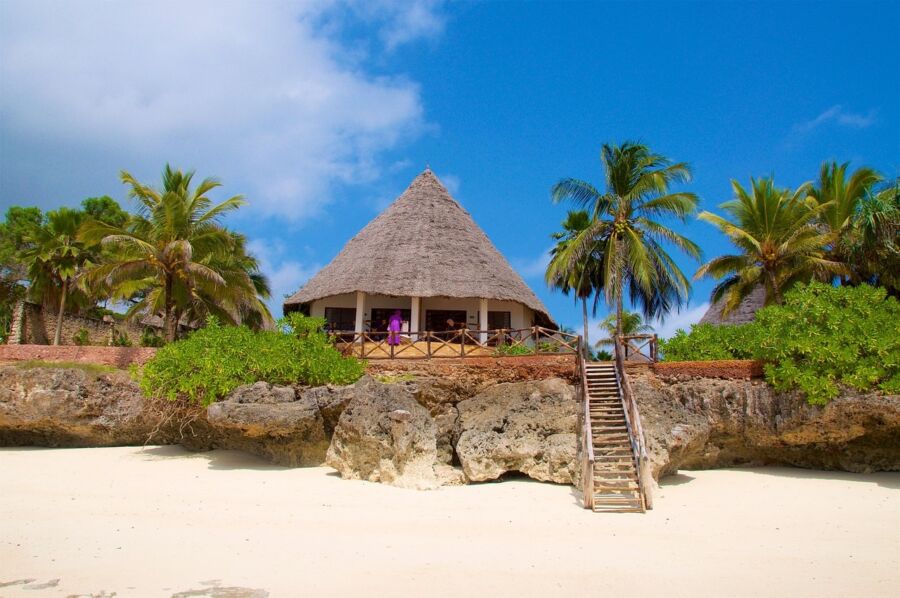
Finding the right place to stay can make or break your Tanzania trip. Your budget and preferences will guide your choices, from basic hostels to luxurious safari lodges.
Hostels and Budget Hotels
If you’re watching your wallet, hostels and budget hotels are your best bet. You’ll find dorm beds for as little as $10-20 per night. These places are great for meeting other travelers and getting local tips. Some hostels even offer private rooms for a bit more privacy.
Many budget hotels provide basic but clean rooms for around $30-65 per night. Don’t expect fancy amenities, but you’ll have a comfy bed and sometimes a simple breakfast.
To save even more, consider camping. Many safari operators rent out gear cheaply. Just be prepared for some rustic conditions!
Mid-Range Accommodations
Mid-range options in Tanzania offer good value for money. You can snag nice rooms for about $25-100 per night. These places often have more amenities like air conditioning, Wi-Fi, and sometimes a pool.
Look for guesthouses or small hotels run by locals. They’re usually cheaper than big chain hotels and give you a more authentic experience. Some even include home-cooked meals!
Don’t forget to check out vacation rentals too. You might find great deals on apartments or houses, especially if you’re traveling with a group.
Luxury Safari Lodges
For a once-in-a-lifetime splurge, luxury safari lodges are hard to beat. These can cost anywhere from $350 to over $1000 per night. But wow, are they worth it if you can swing it!
You’ll get stunning views, gourmet meals, and top-notch service. Many include game drives and other activities in the price. Some even have private plunge pools or outdoor showers.
Remember, prices can vary a lot depending on the season. Low season (April-May) can offer big discounts. But you might face some rain and muddy roads. High season (July-October) has the best wildlife viewing but also the highest prices.
Food and Drink Considerations

Eating in Tanzania can be an adventure for your taste buds and wallet. You’ll find options ranging from cheap street eats to fancy restaurants, with lots in between to suit any budget.
Local Cuisine and Street Food
Tanzanian street food is a cheap and tasty way to fill up. Try mandazi, sweet fried dough that’s perfect for breakfast, for about $0.50. Chipsi mayai, a french fry omelet, costs around $1-2 and makes a filling lunch. For dinner, grab some nyama choma (grilled meat) with ugali (corn porridge) for $3-5.
Watch locals to find the busiest food stalls. This usually means the food is fresh and safe. Bring small bills and be ready to eat with your hands. Street food is a great way to try local flavors without breaking the bank.
Restaurant Dining and Prices
Restaurants in Tanzania range from basic local joints to high-end spots. A meal at a simple local restaurant might cost $3-5 per person. Mid-range places charge about $8-15 for a main course. Fancy restaurants in tourist areas can set you back $20-30 or more per dish.
Tipping isn’t always expected, but 5-10% is nice if you got good service. Some places add a service charge, so check your bill. Bottled water is a must and costs about $0.50-1 in restaurants.
Self-Catering and Groceries
Cooking for yourself can save money, especially on longer trips. Look for local markets to buy fresh fruits, veggies, and spices. A kilo of rice costs about $1, while a dozen eggs go for $1.50-2. Bread is cheap at $0.50-1 per loaf.
Supermarkets in big cities have more Western items, but they’re pricier. Stock up on snacks and breakfast foods to cut costs. If your lodging has a fridge, you can keep perishables and leftovers. Just remember to wash produce well before eating.
Travel and Transportation

Getting around Tanzania can be an adventure in itself. The country offers various transport options to suit different budgets and comfort levels.
Public Transport vs. Car Rentals
Public transport in Tanzania is cheap but can be crowded and unpredictable. Dala dalas, the local minibuses, are everywhere and cost about $0.50 per ride. They’re great for short trips and soaking up local culture. Boda bodas (motorcycle taxis) are faster but riskier – expect to pay $1-3 for a short ride.
Car rentals give you more freedom but come at a higher price. A basic car costs around $40-60 per day. You’ll need to be comfortable driving on rough roads and dealing with local traffic. It’s a good option if you’re planning to explore remote areas or go on a self-drive safari.
Remember, fuel costs about $1.20 per liter in Tanzania. Factor this into your budget if you’re renting a car.
For longer trips between cities, you can take intercity buses. They’re more comfortable than dala dalas and cost $10-20 for a 5-6 hour journey. Book in advance for popular routes.
Ferries are a scenic way to travel between mainland Tanzania and Zanzibar. The fast ferry takes about 2 hours and costs $35-45 one-way. Slow ferries are cheaper at $20-30 but take 4-5 hours.
Be prepared for delays and schedule changes. It’s part of the Tanzanian travel experience! Always keep some snacks and water handy for long journeys.
Domestic Flights and Regional Travel
Flying is the fastest way to cover Tanzania’s vast distances. A one-way flight from Dar es Salaam to Kilimanjaro costs $70-120. Book early to get the best deals.
Julius Nyerere International Airport in Dar es Salaam is the main hub for domestic flights. Kilimanjaro International Airport serves the northern safari circuit.
For regional travel, budget airlines offer affordable flights to neighboring countries. You can fly from Dar es Salaam to Nairobi for about $200 round-trip.
Consider buying a tourist visa in advance to save time at the airport. It costs $50 for most nationalities and is valid for 3 months.
Safari Planning: Types and Costs

Planning a safari in Tanzania can be exciting but also complex. The cost varies based on the type of experience you choose, from budget-friendly to ultra-luxurious options. Your group size also plays a role in pricing.
Budget Camping Safaris
Camping safaris are the most affordable way to experience Tanzania’s wildlife. At public campsites inside or near national parks, you’ll sleep in tents. Expect basic facilities and shared bathrooms. Meals are simple but filling, often cooked over a campfire.
Prices for budget safaris start around $150-200 per person per day. This usually covers transport in a 4×4 vehicle, camping gear, park fees, and meals. You might need to help set up camp and do some chores.
These trips are great if you’re okay roughing it a bit. They let you get close to nature and save money for other parts of your trip.
Mid-Range Safari Tours
Mid-range safaris offer more comfort without breaking the bank. You’ll stay in lodges or permanent tented camps with proper beds and private bathrooms. Meals are usually buffet-style with a good variety of options.
Costs for mid-range safaris typically run $300-500 per person daily. This price includes comfortable lodging, all meals, game drives, and park fees.
You’ll get a more relaxed experience compared to camping. Guides are often more experienced, and vehicles might be newer or more spacious.
Luxury Safari Experiences
Luxury safaris pull out all the stops for comfort and service. You’ll stay in high-end lodges or exclusive tented camps. Expect gourmet meals, private guides, and extra perks like spa treatments or hot air balloon rides.
Prices for luxury safaris start at $700-1000 per person per day and can go much higher. This covers top-notch accommodations, all meals and drinks, private game drives, and sometimes flights between parks.
These trips offer the ultimate in comfort and personalized service. They’re perfect if you want to splurge on a once-in-a-lifetime experience.
Group Size and Pricing
The number of people in your safari group affects the cost. Smaller groups or private safaris are pricier but give you more flexibility.
Group sizes usually range from 2-7 people. Joining a scheduled departure with others can save you money. Private safaris for just you and your travel companions cost more but let you customize your itinerary.
Some safari companies offer discounts for larger groups. Solo travelers might pay a single supplement unless they’re willing to share a room.
Prices can change based on the season. Peak times like the wildebeest migration in the Serengeti are more expensive. You can save by traveling during the low season, but weather and wildlife viewing might not be as ideal.
Destination Insights and Hidden Gems
Tanzania offers more than just the famous Serengeti. You’ll find amazing parks, beaches, and cultural experiences off the beaten path. Let’s explore some hidden treasures that won’t break the bank.
National Parks Beyond the Serengeti

Ruaha National Park is a budget-friendly gem. It’s Tanzania’s largest park but gets fewer visitors than the Serengeti. You’ll see lots of elephants, lions, and rare wild dogs here. The scenery is stunning, with baobab trees and rocky hills.
Tarangire National Park is another great choice. It’s close to Arusha and cheaper than the Serengeti. You’ll love the huge herds of elephants and unique landscapes. The park is famous for its ancient baobab trees.
Katavi National Park is perfect if you want a wild, remote experience. It’s hard to get to, but that means fewer tourists and lower prices. You’ll see big groups of hippos and crocs in the rivers.
Coastal Escapes and Zanzibar Beaches

Zanzibar isn’t just for luxury travelers. You can find budget-friendly spots on this beautiful island. Try Paje Beach for white sand and turquoise water without the high prices.
Pemba Island is less crowded and cheaper than Zanzibar. It has amazing beaches and great diving spots. You can stay in simple guesthouses and eat at local restaurants to save money.
For a real hidden gem, check out Mafia Island. It’s cheaper and quieter than Zanzibar. You can swim with whale sharks here from October to March. The island also has nice beaches and coral reefs for snorkeling.
Cultural Experiences and Village Tours
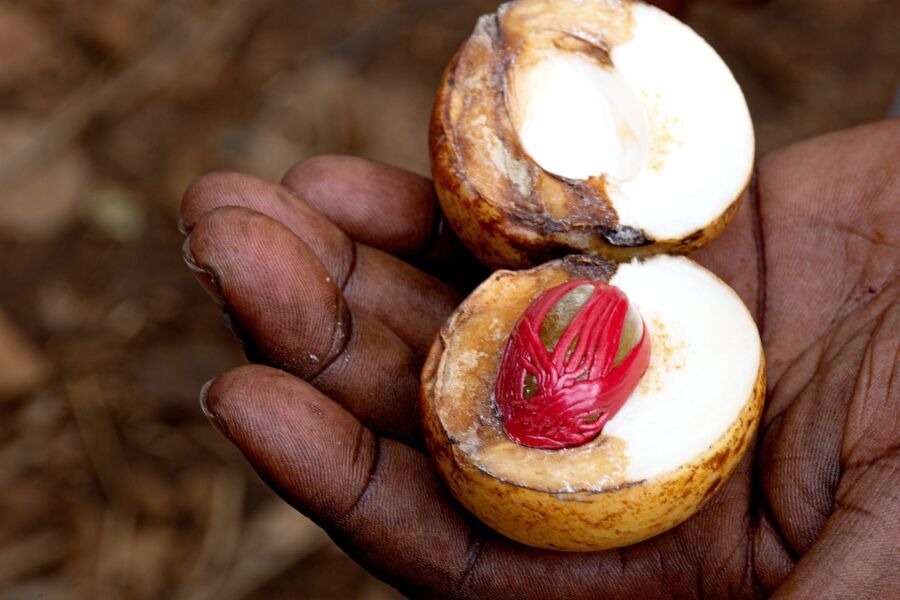
A spice tour in Zanzibar is a fun, affordable way to learn about local culture. You’ll see how spices are grown and used in cooking. Most tours include lunch with traditional Swahili dishes.
In the Usambara Mountains, you can do village tours and homestays. These are cheap and give you a real look at rural life in Tanzania. You’ll stay with local families, eat home-cooked meals, and learn about farming.
Maasai village visits near Arusha or Moshi are popular. But for a more authentic experience, try visiting the Hadzabe or Datoga tribes near Lake Eyasi. These tours are less touristy and often cheaper.
Off-the-Beaten-Path Adventures
The Usambara Mountains are great for budget hiking. You can do day hikes or multi-day treks through forests and villages. Guides are cheap, and you can stay in simple guesthouses.
Mikumi National Park is often overlooked but offers good wildlife viewing at lower prices. It’s easy to reach from Dar es Salaam by bus, making it a cheap safari option.
For a unique adventure, visit Ol Doinyo Lengai, an active volcano. You can climb it at night to see the sunrise. It’s a tough hike but much cheaper than climbing Kilimanjaro. The nearby Lake Natron is also worth a visit for its stunning landscapes and flamingos.
Maximizing Your Travel Experience
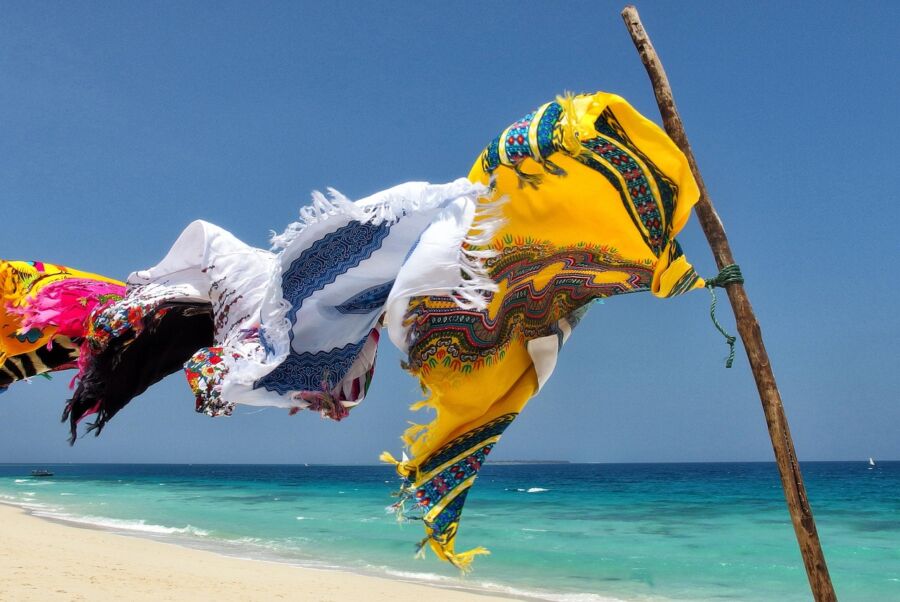
Tanzania offers amazing opportunities for unforgettable adventures. With smart planning, you can make the most of your trip without breaking the bank.
Timing Your Visit: Weather and Seasons
Tanzania’s weather varies greatly across regions. The dry season from June to October is ideal for safaris and beach trips. You’ll see more animals at waterholes and enjoy clearer skies. But prices are higher and crowds bigger.
The rainy season from March to May can be a budget-friendly option. You’ll find cheaper rates and fewer tourists. Some roads may be muddy, but the scenery is lush and green. It’s a great time for bird watching.
The short rains in November and December offer a nice middle ground. You can catch the start of the wildebeest migration in the Serengeti. Prices are moderate and the landscapes are beautiful.
Festivals and Events Worth Attending

Tanzania’s festivals showcase its rich culture. The Zanzibar International Film Festival in July is a must-see. It features African cinema, music, and dance.
Sauti za Busara in February celebrates East African music. The festival takes place in Stone Town, Zanzibar. It’s a great chance to enjoy local tunes and meet people.
For a unique cultural experience, visit during Eid al-Fitr. This Muslim holiday falls at the end of Ramadan. You’ll see colorful celebrations and taste delicious festive foods.
Nightlife and Social Scene
Tanzania’s nightlife varies by location. Dar es Salaam has the most vibrant scene. You’ll find everything from beach bars to nightclubs. Try Samaki Samaki for fresh seafood and live music.
In Zanzibar, head to Stone Town for rooftop bars with ocean views. The Tea House at Emerson on Hurumzi is a popular spot for sunset drinks.
Arusha is the gateway to safari adventures. After a long day, relax at Via Via Cultural Café. It’s a great place to meet fellow travelers and locals.
Sustainable and Responsible Tourism

Responsible tourism helps protect Tanzania’s natural wonders. Choose eco-friendly lodges and tour operators. Many offer solar power and water conservation programs.
Support local communities by booking cultural experiences. Visit Maasai villages or take a cooking class. These activities provide income for locals and enrich your trip.
When on safari, follow park rules and respect wildlife. Don’t disturb animals or leave trash behind. Use reusable water bottles to reduce plastic waste.
Consider volunteering for a day or two. Many organizations offer short-term options. You can help with conservation efforts or community projects.
Practical Tips for the Budget-Conscious Traveler
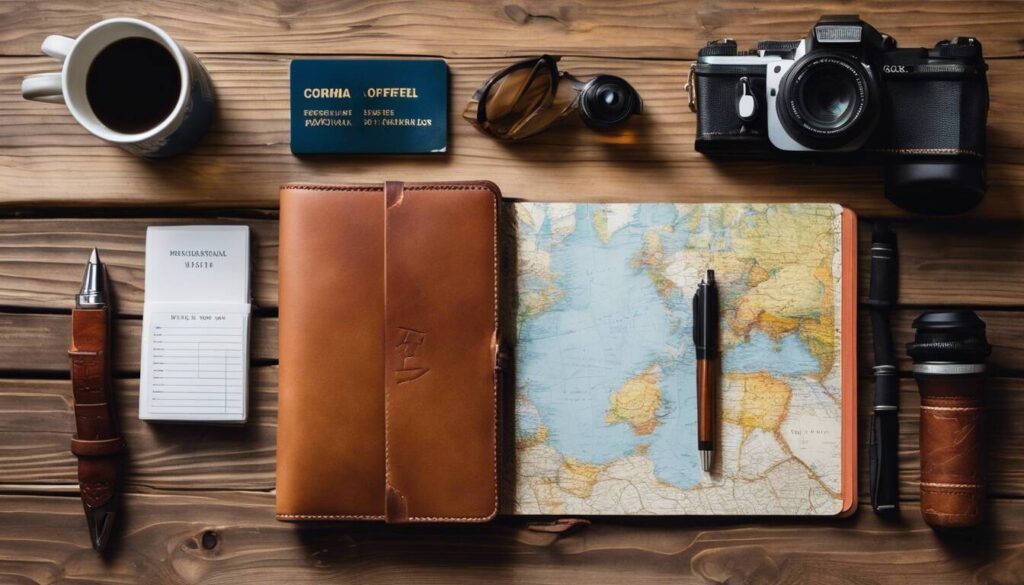
Planning a Tanzania trip on a budget takes some savvy strategies. Let’s dive into some key tips to help you save money while still having an amazing adventure.
Money-Saving Strategies
Book your safari in advance to snag the best deals. Look for group tours instead of private ones – they’re usually cheaper and you’ll meet fellow travelers. Consider visiting during the low season (April-May) for lower prices, but be prepared for some rain.
Eat like a local to save cash. Street food and small local restaurants offer tasty, authentic meals at a fraction of the cost of tourist spots. Try ugali with beans or mishkaki (grilled meat skewers) for a cheap and filling meal.
Use public transportation when possible. Dalla-dallas (minibuses) are dirt cheap and a great way to experience local life. For longer trips, check out buses or trains – they’re slower but much more budget-friendly than flying.
Bargain at markets and with taxi drivers. It’s expected and can save you a good chunk of change. Just remember to be respectful and keep things friendly.
Travel Insurance and Health Precautions
Don’t skimp on travel insurance – it’s a must for Tanzania. Look for a policy that covers medical emergencies and evacuation. It might seem pricey, but it could save you thousands if something goes wrong.
Get your vaccinations sorted well before your trip. Yellow fever, hepatitis A, and typhoid are common recommendations. Check with your doctor about malaria prevention too.
Pack a basic first aid kit with essentials like pain relievers, band-aids, and any personal medications. Bring mosquito repellent and sunscreen – they’re often pricier in Tanzania.
Stick to bottled water and be cautious with street food to avoid stomach issues. It’s no fun being sick on vacation, especially when you’re trying to save money.
Connectivity: SIM Cards and Internet Access
Grab a local SIM card when you arrive. It’s way cheaper than international roaming. Vodacom and Airtel are popular choices with good coverage. You can pick one up at the airport or in most towns.
Many hotels and cafes offer free Wi-Fi, but it can be slow or unreliable. If you need consistent internet, consider getting a portable Wi-Fi device or using your phone as a hotspot.
Download offline maps and translation apps before your trip. They’ll come in handy when you’re out exploring without data.
Be smart about your phone use to avoid surprise charges. Turn off data roaming and use Wi-Fi when possible. Consider leaving your phone in airplane mode and only using it for emergencies.
Safety and Etiquette
Tanzania is generally safe, but you need to use common sense. Keep an eye on your belongings, especially in crowded areas. Don’t flash expensive gear or jewelry around.
Respect local customs and dress modestly, especially in Zanzibar and rural areas. Cover your shoulders and knees, and women should avoid tight or revealing clothing.
Learn a few basic Swahili phrases. Even simple greetings can go a long way in building goodwill with locals.
Be cautious with wildlife. Don’t get too close or feed the animals on safari. Remember, getting too close or feeding the animals is dangerous for you and bad for them.
Always ask before taking photos of people, especially in rural areas. Some might ask for a small tip – it’s up to you whether to give one.


